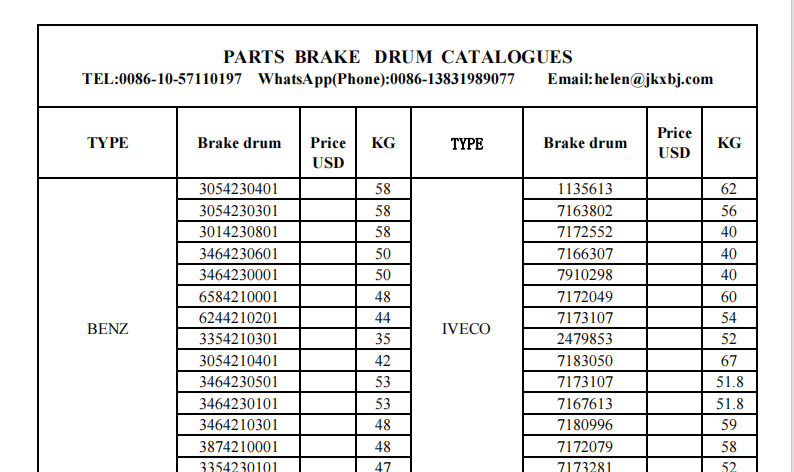Ago . 15, 2024 15:30 Back to list
Techniques for Assessing Brake Drum Roundness and Ensuring Optimal Vehicle Performance
How to Measure Brake Drum Out of Round
Brake drums are an essential component of a vehicle’s braking system, particularly in vehicles with drum brake systems. Over time, brake drums can become out of round due to wear, heat, and stress from braking. This can lead to decreased braking efficiency, vibrations, and uneven wear on brake shoes. Proper maintenance and checking for an out-of-round condition are crucial for your vehicle's safety and performance. In this article, we will discuss how to measure a brake drum for out-of-round condition.
Understanding Out of Round
Before diving into the measurement process, it's important to understand what out of round means. A brake drum is considered out of round when its diameter is not uniform all around. This can be caused by factors such as excessive heat leading to warping, uneven wear, or even manufacturing defects. When a drum is out of round, it can result in pulsation during braking, reduced braking force, and increased wear on the brake lining.
Tools Required
To measure the out-of-round condition of a brake drum, the following tools will be necessary 1. Dial Indicator Gauge This precise instrument is used to measure small distances and variations in surface height. 2. Mounting Fixture To securely hold the dial gauge in place as you rotate the drum. 3. Basic Hand Tools Wrenches and screwdrivers for removing the brake drum from the vehicle.
Step-by-Step Measurement Process
1. Remove the Brake Drum Begin by safely lifting the vehicle and securing it on jack stands. Remove the wheel to access the brake drum. Follow the manufacturer’s specifications for removing the brake components if necessary.
how to measure brake drum out of round

2. Inspect the Drum Before measuring, visually inspect the drum for signs of excessive wear, cracks, or other damage. Any visible damage may require replacement rather than measurement.
3. Set Up the Dial Indicator Attach the dial indicator to a stable surface close to the brake drum. Ensure that it can measure the surface of the drum as it rotates. The probe of the dial indicator should be in contact with the outer surface of the drum.
4. Rotate the Drum Carefully rotate the brake drum by hand. As you do this, watch the dial indicator reading. Ideally, the needle should move smoothly without major fluctuations.
5. Take Measurements Note the highest and lowest readings on the dial indicator as you rotate the drum. The difference between these readings will tell you the extent of out-of-roundness. Typically, a deviation of more than 0.003 inches (0.08 mm) is considered excessive and may require resurfacing or replacement.
6. Re-check for Consistency For accuracy, rotate the drum multiple times and take note of the measurements. This can help ensure there are no anomalies in the readings.
7. Evaluate Results If your measurements indicate that the drum is out of round, evaluate the possibility of resurfacing. Most machine shops can resurface the drum to restore it to a round condition. If the drum is excessively worn or damaged, replacement may be necessary.
Conclusion
Measuring brake drum out of round is a crucial part of maintaining your vehicle’s braking system. Regular inspections and timely interventions can help ensure optimal performance and safety. If you are not confident in performing these measurements or if your drum is severely damaged, it is advisable to seek professional help. Prioritizing brake health ultimately leads to safer driving experiences on the road.
-
Brake Drum Man - High-Quality Drum Brake Drums & Brake Shoes for Reliable Performance
NewsJun.24,2025
-
High-Quality Brake Drum Kamaz – Durable Drum Brake Drum & Brake Shoe Replacement
NewsJun.10,2025
-
High-Quality Brake Drum Liza for Drum Brake Systems - Superior Durability and Performance
NewsJun.10,2025
-
High-Quality Brake Drum Kamaz – Durable Drum Brake Drum & Brake Shoe Solutions
NewsJun.10,2025
-
Durable Kamaz Brake Drums High-Performance Truck Parts
NewsJun.09,2025
-
Premium Brake Drum Maz Kit with Shoes Enhanced Braking
NewsJun.09,2025
